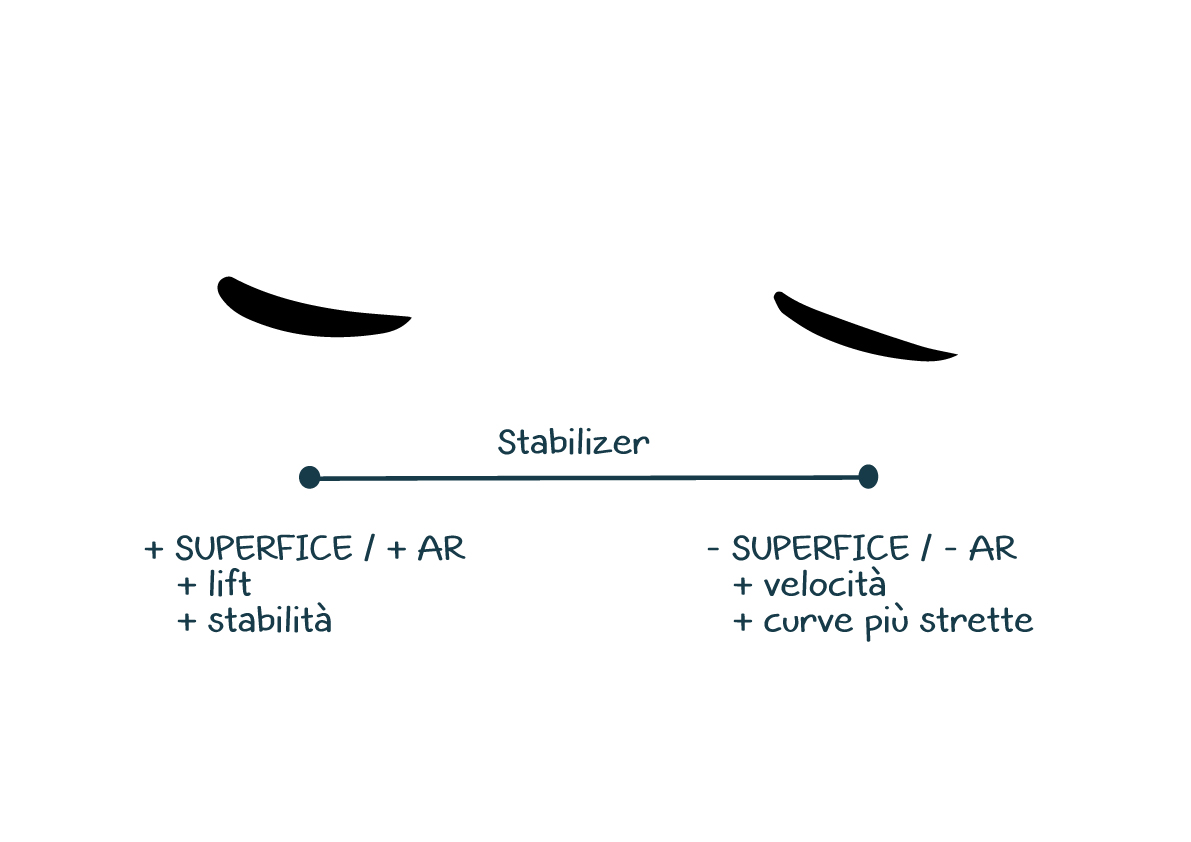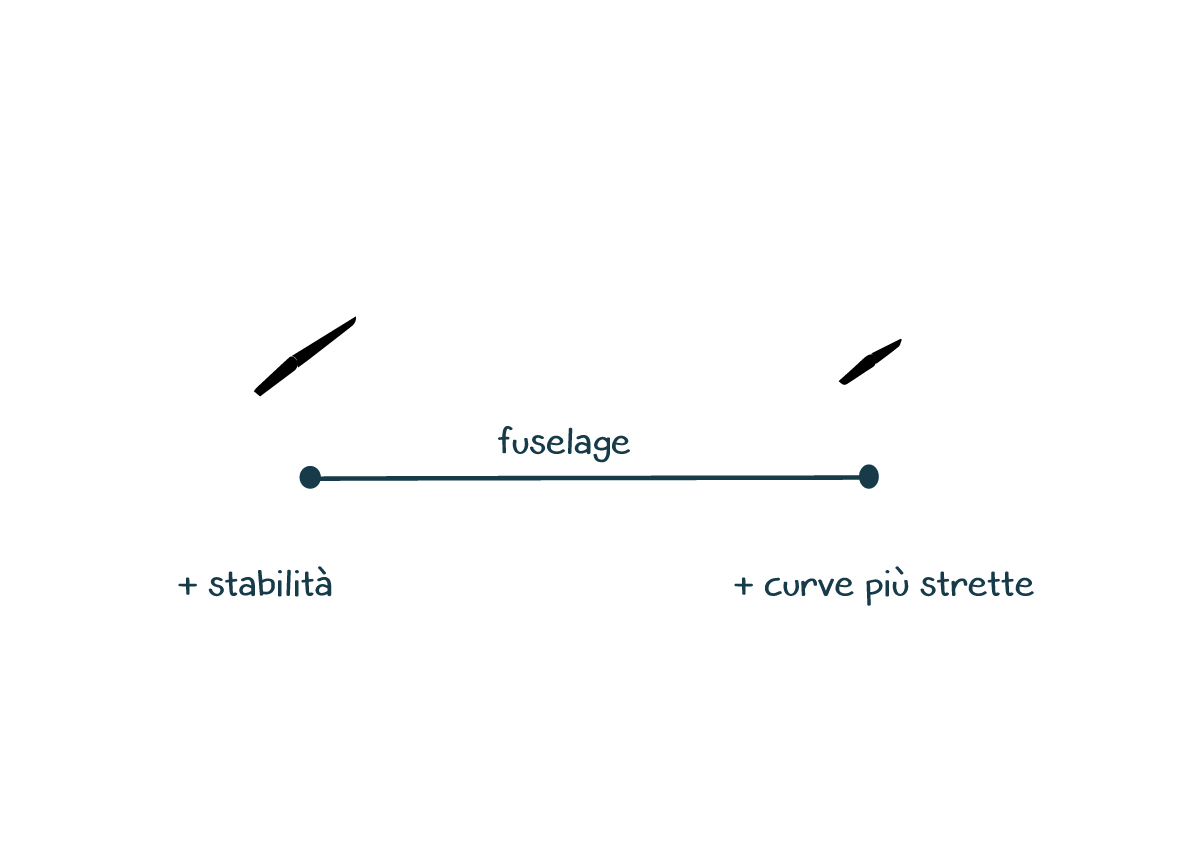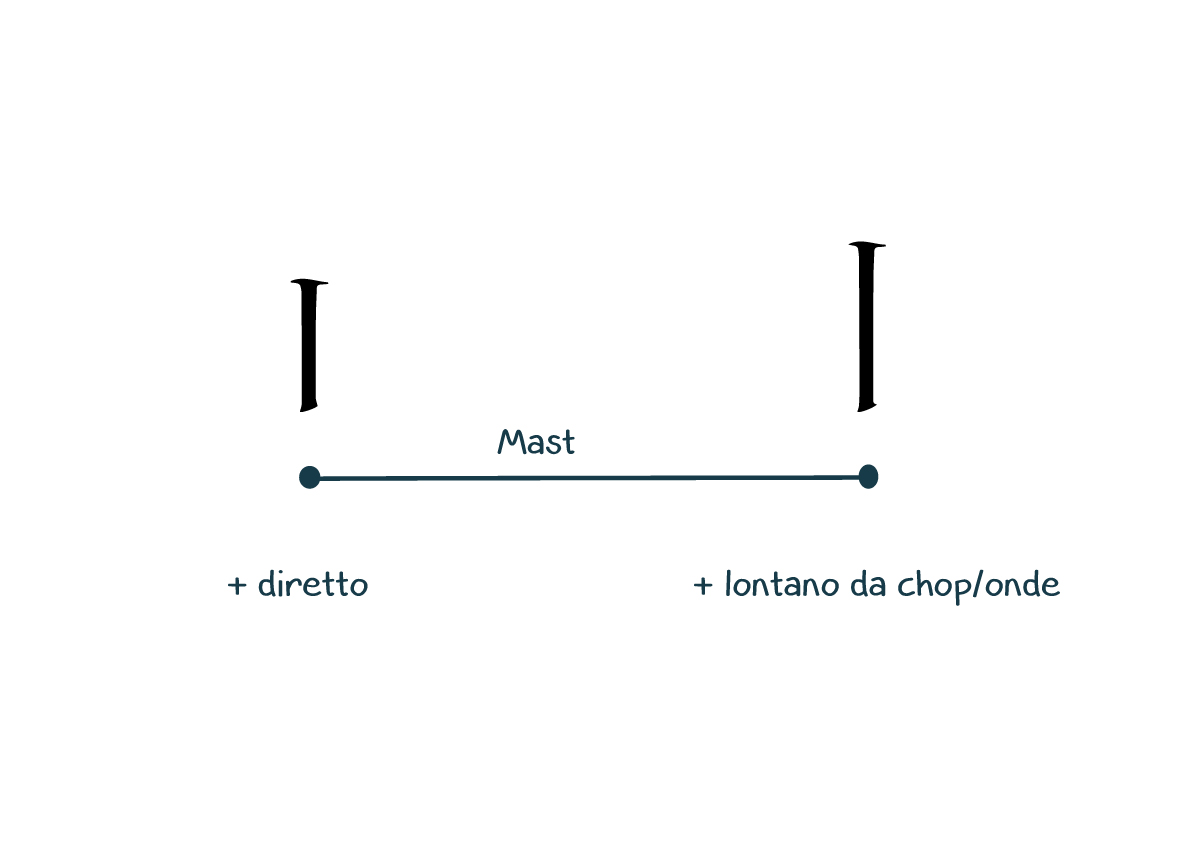In recent years, foiling has grown very rapidly establishing itself in kitesurfing, surfing and wing. Each of these sports requires foils with specific characteristics and within each sport various disciplines have already developed such as wave, freestyle and racing. Finding exactly the hydrofoil you need for your style isn't easy but it's essential for faster and more enjoyable progression.
Leaving aside the fluid dynamics applied to foils, there are still some basic notions that it is important to keep in mind to choose the right foil, which mainly concern the measurements of your foil, the shape and the material. In this short article we will focus on the measures, with small nods to some basic notions on the shape, which are often the most difficult characteristics to evaluate.
First of all, remember that the hydrofoil is made up of two "wings" (front wing and back wing) and a fuselage that connects to the board through the mast.
FOIL FRONT WING
The front wing (front wing of the foil) is the component that generates most of the lifting force (uplift). Moving forward, the front wing pushes the water downwards, generating the lift of the foil.
The basic rule is quite simple: the bigger the front wing, the greater the lift it can generate and the size of the front wing, its surface area, is expressed in cm2.
So bigger front wing = more lift.
The size of the front wing also affects other characteristics.
The speed of the foil: bigger front wing = less speed.
The stability of the foil: bigger front wing = more stability
The agility of the foil: bigger front wing = less agility
To the basic rule, however, other variables are added that influence the equation given by the profile, the Aspect Ratio and the angle of attack of the front wing. In particular, the AR Aspect Ratio deserves a quick study. The aspect ratio is the ratio of wingspan (the width of the wing from tip to tip) to surface area. At the same surface area a front wing with a low Aspect Ratio is more stable than one with a high AR and is capable of generating lift at much lower speeds. This is why if you are a beginner you should pay close attention to choosing a low AR front wing.
From here it is easy to understand that the size of the front wing must be chosen mainly according to the rider's weight, but also to his ability and discipline because an expert rider, as opposed to a beginner, generally prefers performance and speed rather than stability. A foil to be used with a wing will generally be larger than one to be used with a kite. An inexperienced rider will need a larger, lower AR front wing to start with than a more experienced rider of the same weight can use. The limit of a front wing that is too big is that at high speeds it will be more difficult to control... when the wind picks up a light rider will literally find himself thrown out and unable to control his foil... so it's good to abound to try a foil that easily generates lift, but without exaggerating. And if possible, have two different front wings to change according to the wind conditions.
FOIL BACK WING - STABILIZER

The back wing or rear wing, also called stabilizer is often erroneously underestimated. Let's see what its function is. As it is easy to deduce from the name "stabilizer" the back wing determines the stability of the foil. Plus, just like the front wing, it affects lift and handling.
Generally speaking, the bigger the back wing, the more lift, stability and control it will have.
The smaller the back wing, the greater the reactivity and agility of the foil.
Also in the case of the back wing, the aspect ratio also counts.
Low AR back wings are more stable and have more lift than high AR back wings. On the other hand a higher AR gives less water resistance and more efficiency, speed, maneuverability and tighter turns.
Some foils offer the possibility of adding risers, angled shims to adjust the angle of attack of the back wing. Modifying the angle of attack of the back wing affects the general feeling of the foil and the lift it is able to generate.
FOIL FUSELAGE

The fuselage is the part that connects the front wing and back wing. In this case it is the length that makes the difference.
Longer fuselage = greater stability
Shorter fuselage = more agility and handling
Foils with a longer fuselage are more suitable for beginners, while foils with a short fuselage are indicated for wave riding where the ability to perform very tight carves is required.
FOIL MAST

The Mast, the foil mast, can be taller or shorter. The right length should be chosen based on the spot (depth of the seabed), the conditions (flat water or waves) and of course the rider's preferred level and discipline.
The shorter masts (around 60 cm) are generally used for teaching and in spots with shallow waters or submerged rocks.
Medium length masts (around 75cm) are generally used in deeper water, small wave conditions and for surf foiling
The longer masts (about 90cm) are used in freeride but also in chop and bigger waves.
In general, a shorter mast makes the foil more direct and its response to commands more immediate because there is less distance between the board and the fuselage. A short mast is ideal in small waves, where you will appreciate every carve. The longer masts allow you to have a greater inclination and go upwind by leaning without the board touching the water. Since the distance between the board and the fuselage is greater in the curves, some immediacy is lost. On the other hand, staying further from the water surface helps in case of rough seas and with chop.
So in the waves is it better to choose a 75 mast? This is true until you face bigger waves.. in this case having a bigger mast makes you lose some reactivity but allows you to overcome the crest of the waves without problems.
Pubblicato il 31 maggio 2022 | Blog > Technique: KITESURF | SURF | WING | SUP

